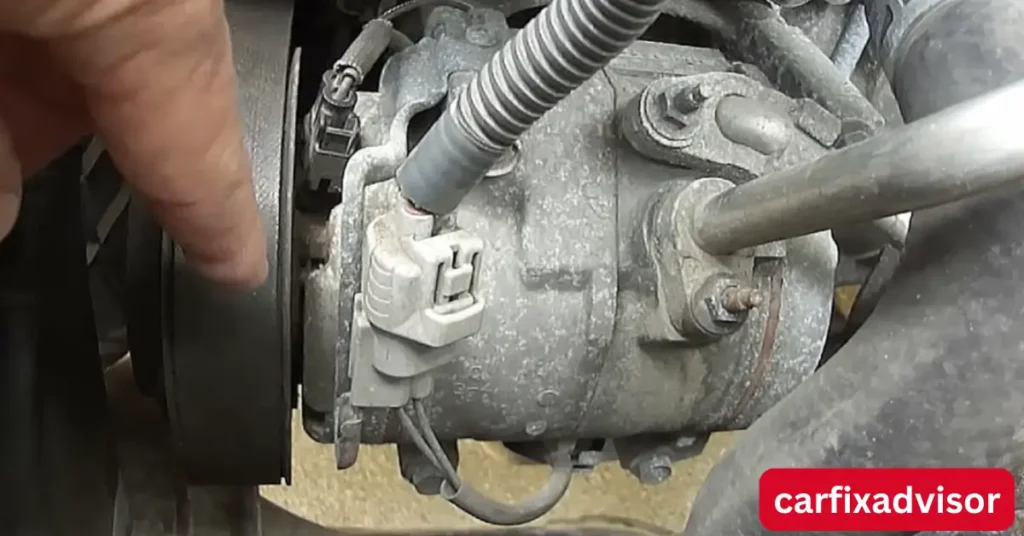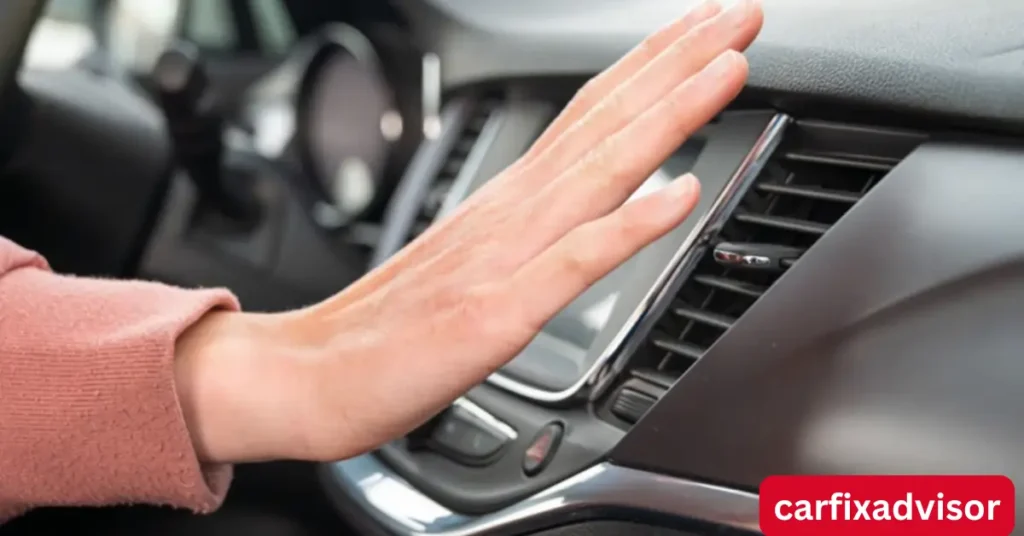When it’s a hot summer day, the last thing you want is to find that your car’s air conditioning system isn’t working. You may notice that while the AC fan is running, the air isn’t getting cool. The issue could stem from a problem with the car AC compressor, a crucial component that is responsible for cooling the air circulating through your vehicle.
If you’re experiencing the frustrating issue of the car AC compressor not working but the fan is running, you’re not alone. This is a common problem that can happen for several reasons, ranging from something as simple as low refrigerant levels to more complex issues like a broken compressor clutch. In this article, we’ll walk through the reasons why this happens, how to troubleshoot it, and the possible solutions to restore your car’s cooling system.
What is the AC Compressor and Why is it Important?
Before diving into the issue, let’s first understand the role of the air conditioning compressor in your car’s cooling system.
The Function of the AC Compressor:
The AC compressor is the heart of your car’s air conditioning system. It plays a vital role in cooling the air that is blown through your vehicle’s vents. The compressor works by:
-
Compressing the refrigerant: It draws in low-pressure refrigerant gas and compresses it into a high-pressure gas, which is essential for the air conditioning cycle.
-
Circulating refrigerant through the system: Once compressed, the refrigerant is sent through the condenser, where it’s cooled down and changed into a liquid form before moving to the evaporator to absorb heat and cool the air.
-
Enabling cooling efficiency: The compressor helps ensure that the entire air conditioning cycle operates efficiently, delivering cold air to the cabin.
Without the compressor functioning properly, the refrigerant cannot circulate correctly, and the air conditioning system will fail to cool the air, even if the fan is still running.
Why Is Your Car AC Compressor Not Working But Fan Is Running?
If the fan is blowing air but the AC isn’t cooling, it usually means that the compressor is not engaging or functioning properly. Let’s break down some of the common reasons for this issue:
1. Low Refrigerant Levels
One of the most common causes of a non-working compressor is low refrigerant levels. The refrigerant (often R-134a or R-1234yf) is the substance responsible for absorbing and releasing heat in the air conditioning system. If the refrigerant levels drop below the necessary amount, the compressor won’t have enough refrigerant to circulate and cool the air.
-
Signs of Low Refrigerant:
-
Weak airflow
-
Warm air coming from the vents
-
Hissing sound near the AC system
-
Ice forming around the refrigerant lines
-
How to Fix: A mechanic can check the refrigerant level and recharge it if necessary. Sometimes a leak may be present, which would need to be addressed before recharging the system.
2. Faulty Compressor Clutch
The compressor clutch is responsible for engaging and disengaging the compressor based on the car’s cooling needs. If the clutch fails, the compressor won’t activate, and the air conditioning won’t cool the air.
-
Symptoms of a Faulty Clutch:
-
The compressor is not cycling on and off
-
The clutch fails to engage when the AC is turned on
-
A noticeable clicking or grinding sound coming from the AC unit
-
How to Fix: The clutch may need to be replaced or adjusted. In some cases, the compressor may need to be replaced entirely if the issue stems from a damaged clutch.
3. Blown Fuse or Relay
Your vehicle’s AC system is powered by an electrical system that includes fuses and relays. If either the fuse or the relay for the compressor fails, the system may run the fan without engaging the compressor, causing the AC to blow warm air.
-
Symptoms of a Blown Fuse/Relay:
-
AC fan runs, but the compressor doesn’t engage
-
No cold air from the AC even when it’s turned on
-
Other electrical issues, such as non-functioning dashboard lights
-
How to Fix: Check the vehicle’s fuse box for a blown fuse or faulty relay. Replacing the fuse or relay is typically a simple fix, but it may require professional help if you are not familiar with your car’s electrical system.
4. Damaged or Leaking Compressor
Over time, wear and tear can damage the compressor, causing it to malfunction. A damaged or leaking compressor might still allow the fan to run, but the system will not be able to produce cool air.
-
Signs of a Damaged Compressor:
-
Grinding or rattling noises coming from the compressor
-
Visible leaks around the compressor unit
-
Inconsistent cooling or lack of cool air
-
How to Fix: If the compressor is damaged beyond repair, it will need to be replaced. A mechanic can diagnose the extent of the damage and determine whether the entire compressor or just a component needs replacing.
5. Clogged or Dirty Condenser
The condenser is responsible for cooling the refrigerant once it leaves the compressor. If the condenser is clogged with dirt, debris, or bugs, the refrigerant will not cool properly, and the AC system will fail to produce cool air.
-
Symptoms of a Clogged Condenser:
-
The AC system blows warm air
-
A noticeable reduction in cooling efficiency
-
The condenser appears dirty or damaged
-
How to Fix: The condenser can be cleaned or replaced if necessary. A mechanic will clean the condenser to remove debris, or if it is severely damaged, it may need replacing.
Car AC Compressor Not Working But Fan Is Running
How to Diagnose the Issue Yourself
While many AC problems require a professional mechanic to fix, there are a few basic troubleshooting steps you can try at home to identify the cause of the issue.
1. Check the AC Compressor Clutch
Look for the compressor clutch when the AC is turned on. You should see the clutch spinning as the compressor engages. If it’s not turning, there could be an issue with the clutch or the electrical system.
2. Listen for Unusual Noises
If you hear any strange noises, such as grinding or clicking, when the AC is on, this could indicate a problem with the compressor or other parts of the system. Grinding noises often point to internal damage, while clicking could be related to the compressor clutch.
3. Inspect for Refrigerant Leaks
A refrigerant leak can cause low refrigerant levels, which will prevent the AC system from cooling the air. If you suspect a leak, you may notice oily residue around the AC components. You can use a UV dye or refrigerant leak detector to help find small leaks.
4. Check the Fuse Box
Inspect the fuse box to see if any of the fuses related to the AC system are blown. If you find a blown fuse, replace it with one of the same rating. If the fuse blows again, it may indicate a deeper electrical issue.
When to Call a Professional
If you’ve performed the basic troubleshooting steps and the issue persists, or if you’re unable to pinpoint the problem, it’s time to call a professional. AC systems can be complex, and attempting to repair the system without the proper knowledge and tools can cause further damage.
A trained mechanic will have the diagnostic tools to assess the AC system, identify the root cause, and recommend the appropriate solution. Whether it’s a simple recharge of refrigerant or a full compressor replacement, they can fix the issue and ensure your AC is running smoothly.
Car AC Compressor Not Working But Fan Is Running
Potential Repair Costs for a Non-Working AC Compressor
When your car’s AC compressor isn’t working but the fan is running, it’s important to get the issue resolved promptly. While the problem might seem minor at first, it can lead to significant discomfort, especially in hot weather. The repair costs associated with this issue can vary depending on several factors, such as the specific problem, the make and model of your vehicle, and whether you go to a dealership or a local mechanic.
Let’s break down the potential costs associated with repairing or replacing an AC compressor:
1. Refrigerant Recharge
If low refrigerant is the cause of your AC not cooling, you may only need to recharge the refrigerant. This is usually the least expensive option for fixing your AC issue.
-
Cost Range: $150 – $300
-
What’s Included: The cost typically covers labor for the mechanic to check the refrigerant levels and recharge the system. If the system is low due to a leak, the mechanic will need to find and fix the leak before recharging the refrigerant.
2. Compressor Clutch Repair or Replacement
If the problem is a faulty compressor clutch, you may need to repair or replace the clutch mechanism. The clutch ensures that the compressor engages when necessary, so if it’s not working properly, the compressor won’t engage, and the AC won’t cool.
-
Cost Range: $150 – $400
-
What’s Included: The cost varies depending on whether you need to replace just the clutch or the entire compressor. If the compressor itself is fine, repairing or replacing the clutch can be more affordable.
3. Compressor Replacement
If the compressor is completely broken, it will need to be replaced. This is one of the more expensive repairs for the AC system. Compressor replacement typically requires labor-intensive work, including removing the old compressor and installing a new one, which can take several hours.
-
Cost Range: $500 – $1,500
-
What’s Included: This cost generally covers the compressor itself, which can be expensive, as well as labor fees for the mechanic. Luxury or foreign cars tend to have higher parts and labor costs, so the replacement might be on the higher end.
4. Condenser Repair or Replacement
If the condenser is clogged or damaged, it could be preventing the refrigerant from cooling properly. A clogged condenser can result in the compressor failing to operate correctly, leading to issues with cooling.
-
Cost Range: $300 – $700
-
What’s Included: This cost includes the labor to remove and replace the damaged condenser, as well as the cost of the new part. In some cases, cleaning the condenser might be enough, which would be a more affordable fix.
5. Electrical Issues and Relay Replacement
If the issue lies in the electrical system, such as a blown fuse or faulty relay, the costs will be relatively low compared to replacing mechanical parts. However, electrical problems can be tricky to diagnose, which is why professional help is often needed.
-
Cost Range: $50 – $200
-
What’s Included: Labor charges for diagnosing electrical issues and replacing blown fuses or relays are generally affordable. If the problem is more complicated, such as a short circuit in the AC system, the cost could be higher.
Factors That Affect Repair Costs
While the above ranges provide a general idea of what you can expect, several factors can influence the overall cost of repairing your AC system:
-
Vehicle Make and Model: Luxury cars, high-performance vehicles, and foreign-made cars tend to have higher repair costs due to the specialized parts and expertise required. Parts for common models may be cheaper and more readily available.
-
Labor Costs: Labor rates vary significantly depending on your location and the shop you choose. Dealerships usually charge higher labor rates compared to independent repair shops.
-
Extent of the Problem: If your AC system is suffering from multiple issues (e.g., a broken compressor clutch, low refrigerant, and a clogged condenser), the overall repair cost will be higher. In such cases, a more comprehensive repair might be necessary.
How to Maintain Your AC System to Avoid Expensive Repairs
Taking proactive measures can help you avoid expensive AC repairs down the road. Regular maintenance of your vehicle’s air conditioning system not only ensures that the system works efficiently but also extends its lifespan. Here are some tips to keep your car’s AC running smoothly:
1. Run Your AC Regularly
Even in cooler months, it’s a good idea to run your car’s AC for 10 to 15 minutes every couple of weeks. This helps keep the system lubricated, prevents seals from drying out, and ensures that refrigerant continues circulating properly.
2. Check and Change the Air Filter
A clogged air filter can restrict airflow to the AC system, causing it to work harder than necessary. Make sure to check and replace the air filter as recommended by your vehicle’s manufacturer to ensure optimal cooling performance.
3. Inspect for Leaks
Refrigerant leaks are one of the leading causes of AC failure. If you notice that your AC isn’t cooling as efficiently as it should, have the system checked for leaks. A small leak can be fixed before it becomes a bigger issue.
4. Keep the Condenser Clean
The condenser is located near the front of your vehicle and is vulnerable to dirt, debris, and even bugs. Over time, debris can build up and clog the condenser, which reduces cooling efficiency. Regularly clean the condenser or have it inspected by a mechanic to ensure it’s functioning properly.
5. Maintain Proper Refrigerant Levels
Low refrigerant levels can lead to a non-working compressor, as we discussed earlier. Ensure that your AC system is properly charged with refrigerant. If your refrigerant levels are consistently low, it could indicate a leak that needs to be addressed.
Conclusion:Car AC Compressor Not Working But Fan Is Running
If your car AC compressor is not working but the fan is running, it’s essential to address the issue as soon as possible to avoid further damage to your air conditioning system. While there are several potential causes for this problem—from low refrigerant to a faulty compressor clutch—early diagnosis and repair can save you from more expensive issues down the road.
By performing basic troubleshooting steps, such as checking the refrigerant levels and inspecting the compressor clutch, you can get a better idea of what’s going wrong. If the issue persists or you’re unsure how to proceed, don’t hesitate to take your vehicle to a professional mechanic. A well-maintained AC system can keep you comfortable all year round, and addressing problems early ensures it continues to perform at its best.


